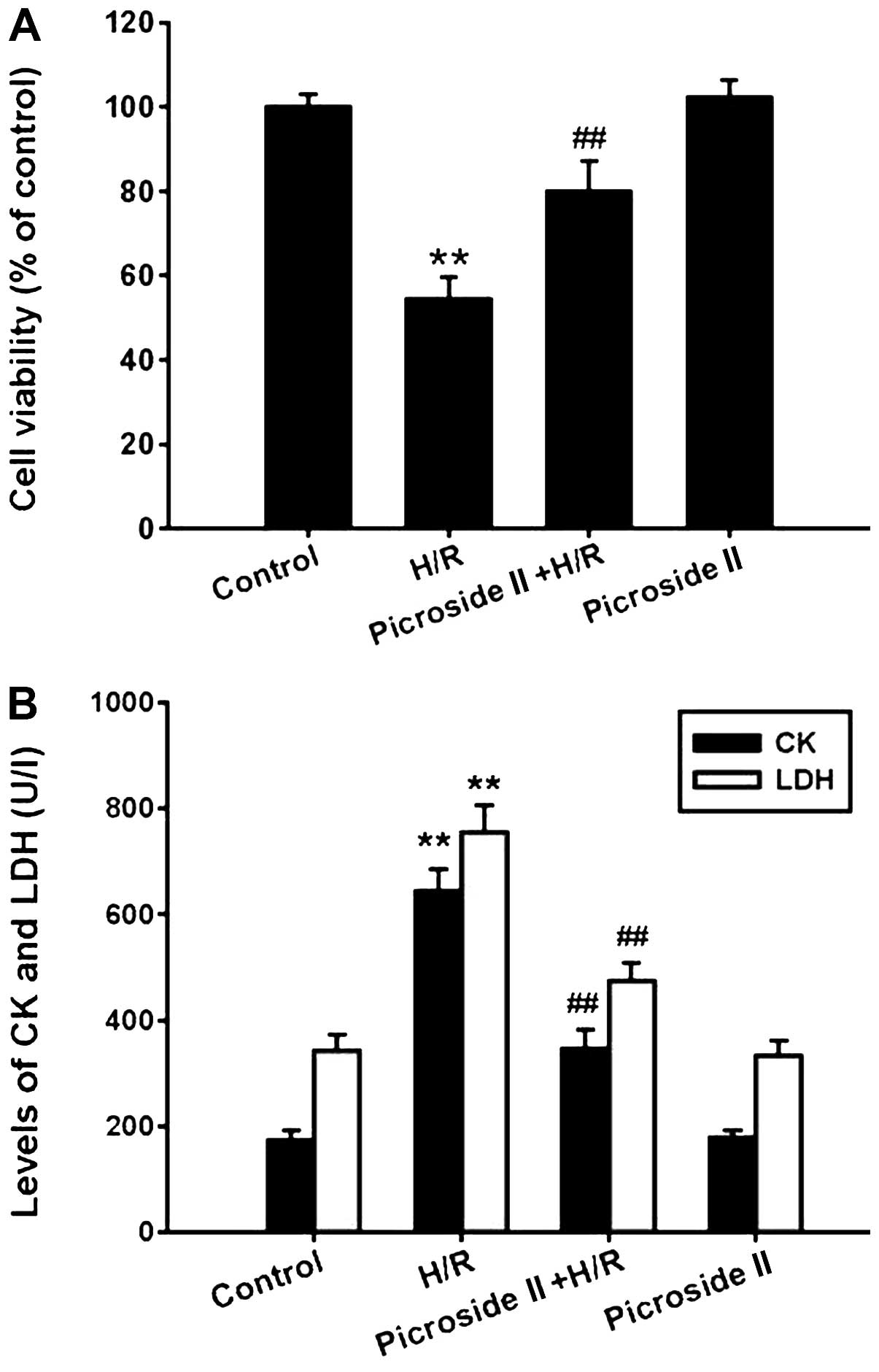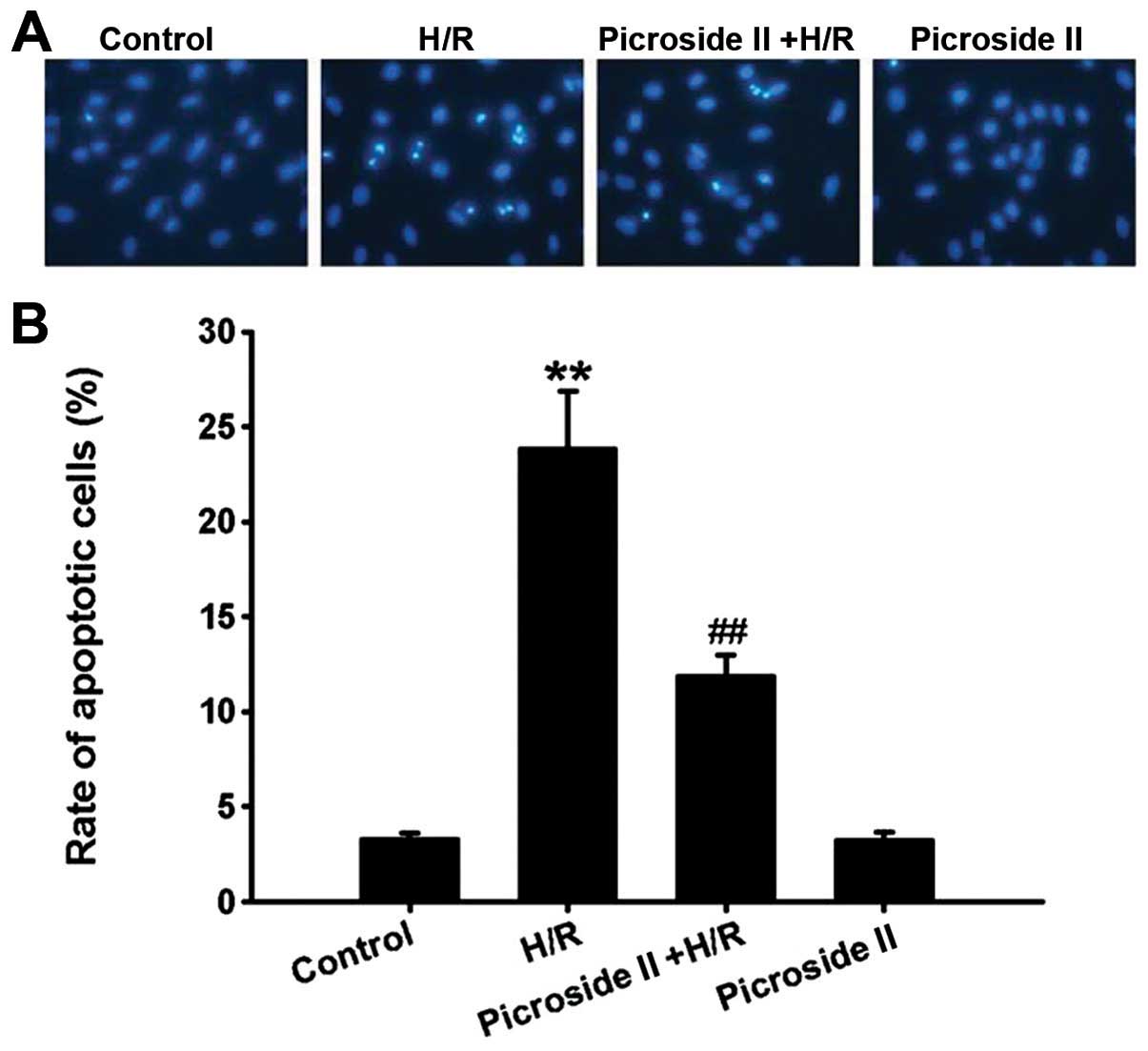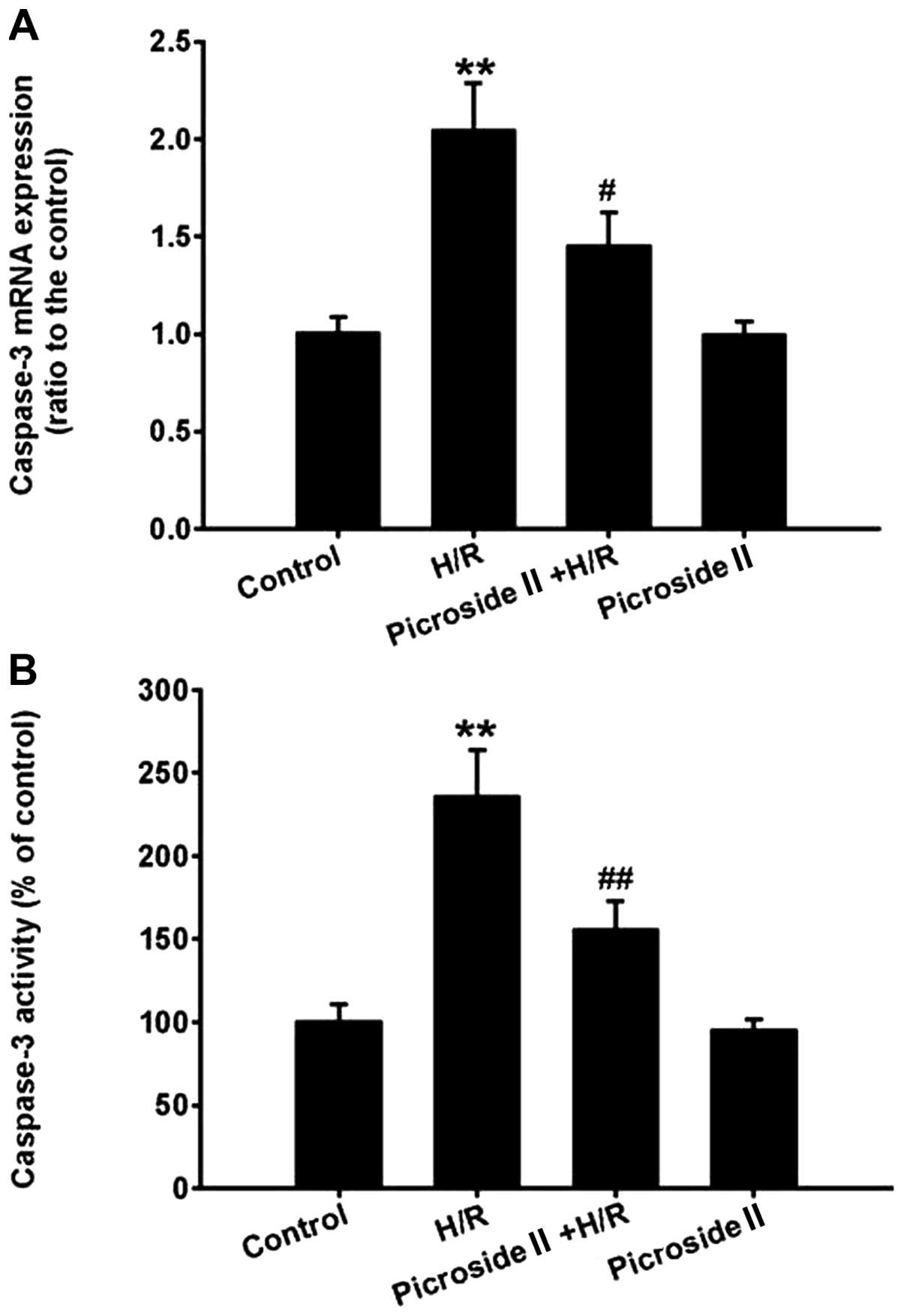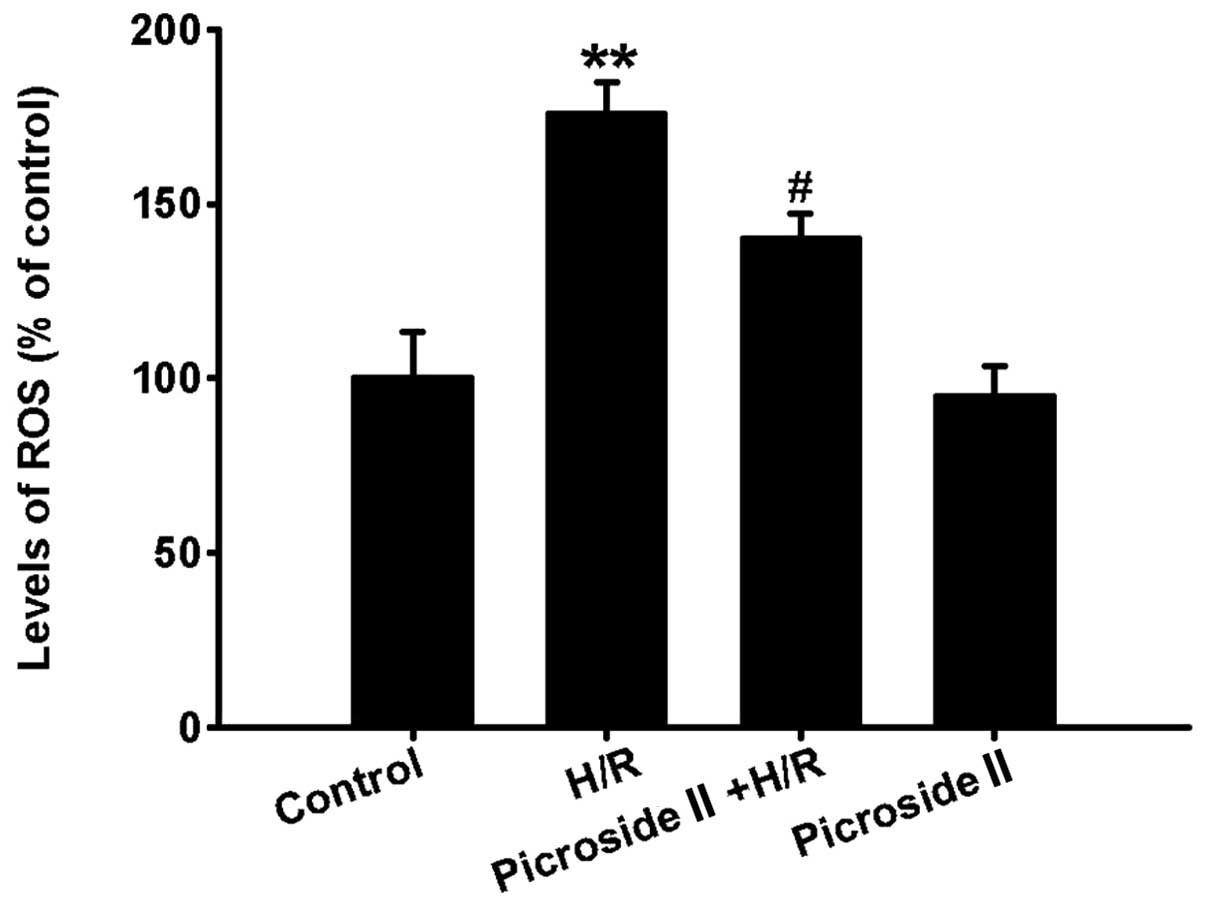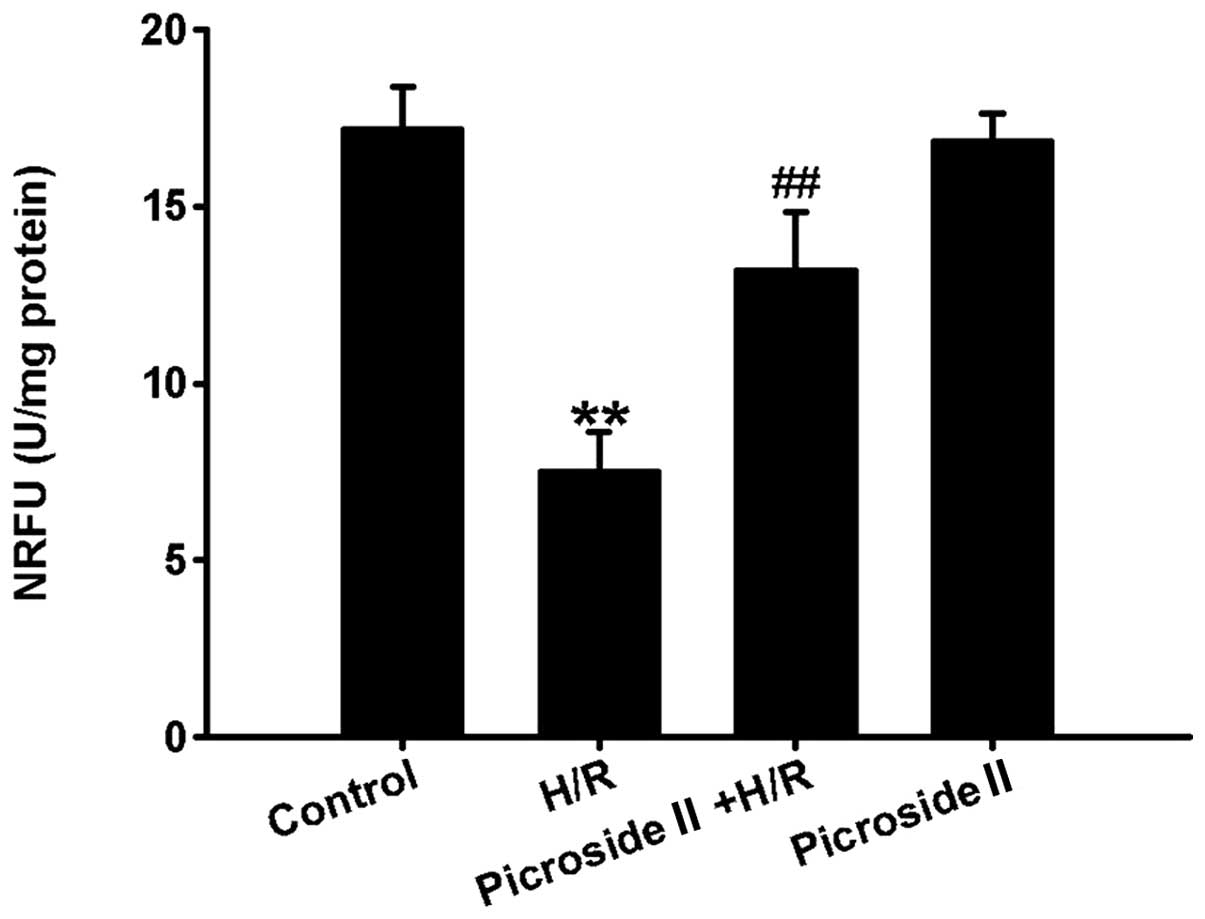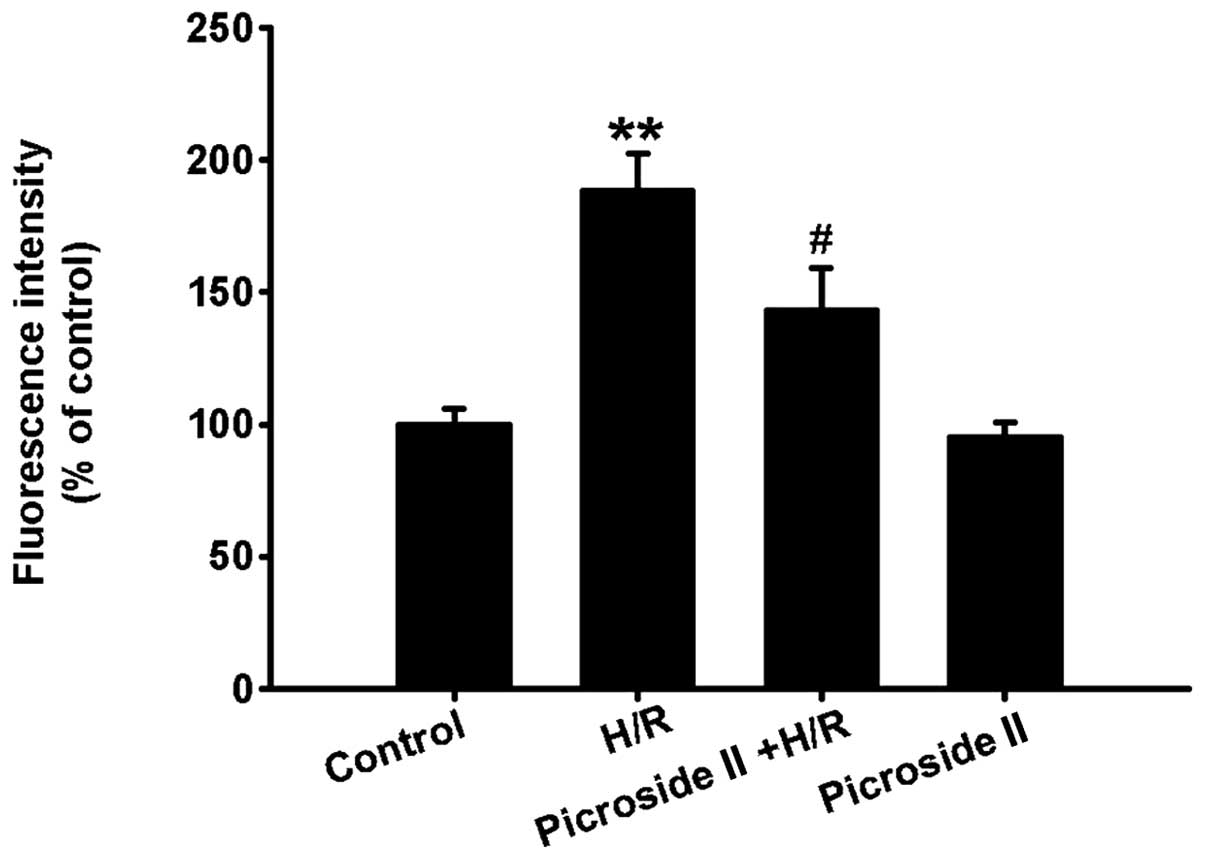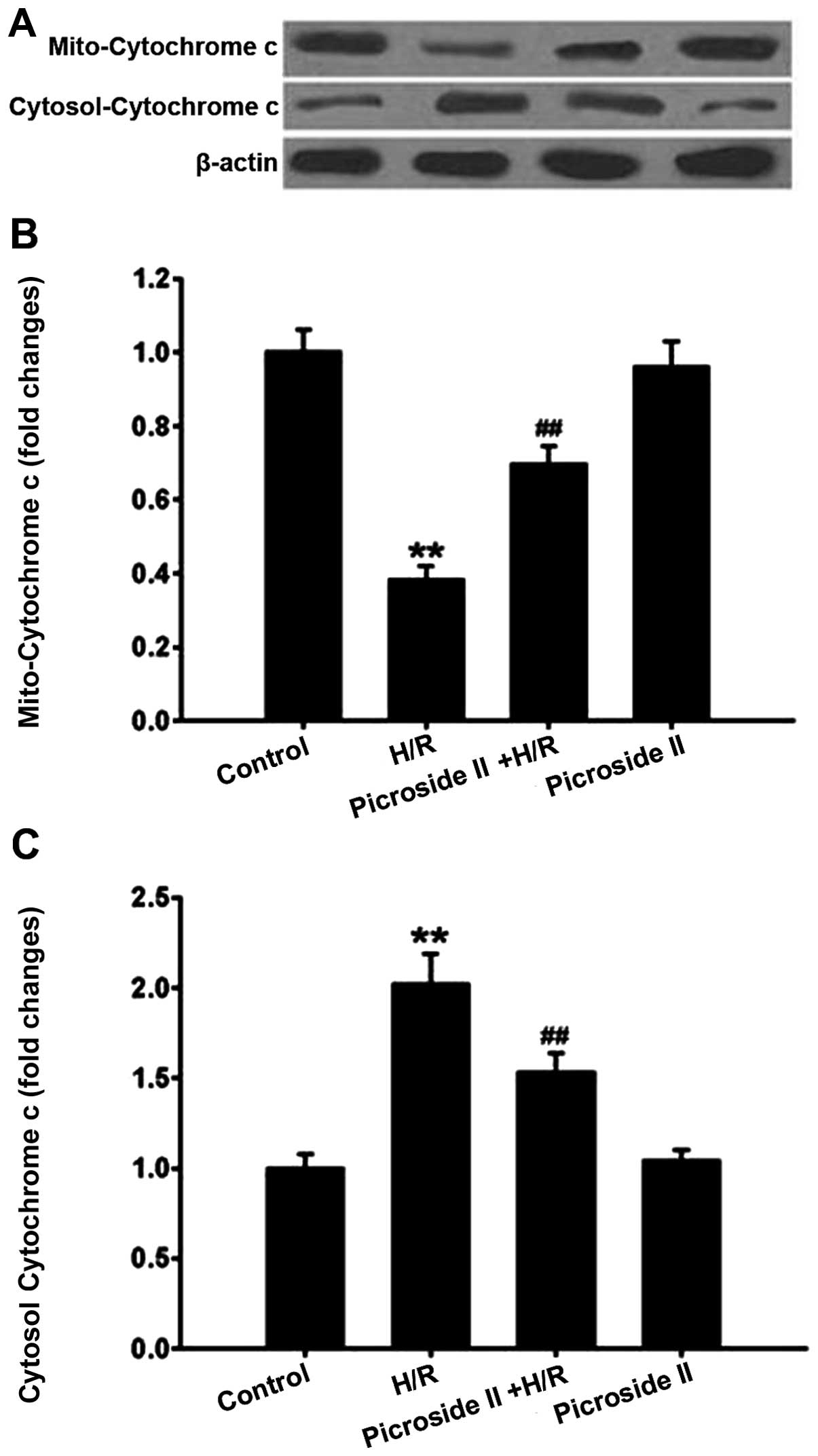|
1
|
Dianat M, Esmaeilizadeh M, Badavi M,
Samarbaf-Zadeh AR and Naghizadeh B: Protective effects of crocin on
ischemia-reperfusion induced oxidative stress in comparison with
vitamin E in isolated rat hearts. Jundishapur J Nat Pharm Prod.
9:e171872014.PubMed/NCBI
|
|
2
|
Rodrigo R, Libuy M, Feliú F and Hasson D:
Molecular basis of cardioprotective effect of antioxidant vitamins
in myocardial infarction. Biomed Res Int. 2013:4376132013.
View Article : Google Scholar : PubMed/NCBI
|
|
3
|
Wongcharoen W, Jai-Aue S, Phrommintikul A,
Nawarawong W, Woragidpoonpol S, Tepsuwan T, Sukonthasarn A, Apaijai
N and Chattipakorn N: Effects of curcuminoids on frequency of acute
myocardial infarction after coronary artery bypass grafting. Am J
Cardiol. 110:40–44. 2012. View Article : Google Scholar : PubMed/NCBI
|
|
4
|
Syrjälä SO, Tuuminen R, Nykänen AI,
Raissadati A, Dashkevich A, Keränen MA, Arnaudova R, Krebs R, Leow
CC, Saharinen P, Alitalo K and Lemström KB: Angiopoietin-2
inhibition prevents transplant ischemia-reperfusion injury and
chronic rejection in rat cardiac allografts. Am J Transplant.
14:1096–1108. 2014. View Article : Google Scholar : PubMed/NCBI
|
|
5
|
Liu Y, Yang H, Song L, Li N, Han QY, Tian
C, Gao E, Du J, Xia YL and Li HH: AGGF1 protects from myocardial
ischemia/reperfusion injury by regulating myocardialapoptosis and
angiogenesis. Apoptosis. 19:1254–1268. 2014. View Article : Google Scholar : PubMed/NCBI
|
|
6
|
Wang Y, Li X, Wang X, Lau W, Wang Y, Xing
Y, Zhang X, Ma X and Gao F: Ginsenoside Rd attenuates myocardial
ischemia/reperfusion injury via Akt/GSK-3β signaling and inhibition
of the mitochondria-dependent apoptotic pathway. PLoS One.
8:e709562013. View Article : Google Scholar
|
|
7
|
Wu B, Meng K, Ji Q, Yu K, Zhao X, Tony H,
Liu Y, Zhou Y, Chang C, Zhong Y, Zhu Z, Zhang W, Mao X and Zeng Q:
Interleukin-37 ameliorates myocardial ischaemia/reperfusion injury
in mice. Clin Exp Immunol. 176:438–451. 2014. View Article : Google Scholar : PubMed/NCBI
|
|
8
|
Peng YW, Buller CL and Charpie JR: Impact
of N-acetylcysteine on neonatal cardiomyocyte ischemia-reperfusion
injury. Pediatr Res. 70:61–66. 2011. View Article : Google Scholar : PubMed/NCBI
|
|
9
|
Li JZ, Yu SY, Wu JH, Shao QR and Dong XM:
Paeoniflorin protects myocardial cell from doxorubicin-induced
apoptosis through inhibition of NADPH oxidase. Can J Physiol
Pharmacol. 90:1569–1575. 2012. View Article : Google Scholar : PubMed/NCBI
|
|
10
|
Teshima Y, Takahashi N, Nishio S, Saito S,
Kondo H, Fukui A, Aoki K, Yufu K, Nakagawa M and Saikawa T:
Production of reactive oxygen species in the diabetic heart. Roles
of mitochondria and NADPH oxidase. Circ J. 78:300–306. 2014.
View Article : Google Scholar
|
|
11
|
Matsushima S, Tsutsui H and Sadoshima J:
Physiological and pathological functions of NADPH oxidases during
myocardial ischemia-reperfusion. Trends Cardiovasc Med. 24:202–205.
2014. View Article : Google Scholar : PubMed/NCBI
|
|
12
|
Dröse S, Brandt U and Wittig I:
Mitochondrial respiratory chain complexes as sources and targets of
thiol-based redox-regulation. Biochim Biophys Acta. 1844:1344–1354.
2014. View Article : Google Scholar : PubMed/NCBI
|
|
13
|
Loor G, Kondapalli J, Iwase H, Chandel NS,
Waypa GB, Guzy RD, Vanden Hoek TL and Schumacker PT: Mitochondrial
oxidant stress triggers cell death in simulated
ischemia-reperfusion. Biochim Biophys Acta. 1813:1382–1394. 2011.
View Article : Google Scholar :
|
|
14
|
Ma WW, Hou CC, Zhou X, Yu HL, Xi YD, Ding
J, Zhao X and Xiao R: Genistein alleviates the
mitochondria-targeted DNA damage induced by β-amyloid peptides
25–35 in C6 glioma cells. Neurochem Res. 38:1315–1323. 2013.
View Article : Google Scholar : PubMed/NCBI
|
|
15
|
Li J, Umar S, Iorga A, Youn JY, Wang Y,
Regitz-Zagrosek V, Cai H and Eghbali M: Cardiac vulnerability to
ischemia/reperfusion injury drastically increases in late
pregnancy. Basic Res Cardiol. 107:2712012. View Article : Google Scholar : PubMed/NCBI
|
|
16
|
Cui J, Li Z, Qian LB, Gao Q, Wang J, Xue
M, Lou XE, Bruce IC, Xia Q and Wang HP: Reducing the oxidative
stress mediates the cardioprotection of bicyclol against
ischemia-reperfusion injury inrats. J Zhejiang Univ Sci B.
14:487–495. 2013. View Article : Google Scholar : PubMed/NCBI
|
|
17
|
Meng FJ, Hou ZW, Li Y and Yu B: The
protective effect of picroside II against hypoxia/reoxygenation
injury in neonatal rat cardiomyocytes. Pharm Biol. 50:1226–1232.
2012. View Article : Google Scholar : PubMed/NCBI
|
|
18
|
Li T, Liu JW, Zhang XD, Guo MC and Ji G:
The neuroprotective effect of picroside II from hu-huang-lian
against oxidative stress. Am J Chin Med. 35:681–691. 2007.
View Article : Google Scholar : PubMed/NCBI
|
|
19
|
Gao H and Zhou YW: Anti-lipid peroxidation
and protection of liver mitochondria against injuries by picroside
II. World J Gastroenterol. 11:3671–3674. 2005.PubMed/NCBI
|
|
20
|
Meng FJ, Jiao SM and Yu B: Picroside II
protects cardiomyocytes from hypoxia/reoxygenation-induced
apoptosis by activating the PI3K/Aktand CREB pathways. Int J Mol
Med. 30:263–270. 2012.PubMed/NCBI
|
|
21
|
de Vries DK, Kortekaas KA, Tsikas D,
Wijermars LG, van Noorden CJ, Suchy MT, Cobbaert CM, Klautz RJ,
Schaapherder AF and Lindeman JH: Oxidative damage in clinical
ischemia/reperfusion injury: a reappraisal. Antioxid Redox Signal.
19:535–545. 2013. View Article : Google Scholar : PubMed/NCBI
|
|
22
|
Pisarenko OI, Lankin VZ, Konovalova GG,
Serebryakova LI, Shulzhenko VS, Timoshin AA, Tskitishvili OV,
Pelogeykina YA and Studneva IM: Apelin-12 and its structural analog
enhance antioxidant defense in experimental myocardial ischemia and
reperfusion. Mol Cell Biochem. 391:241–250. 2014. View Article : Google Scholar : PubMed/NCBI
|
|
23
|
Ma S, Zhang Z, Yi F, Wang Y, Zhang X, Li
X, Yuan Y and Cao F: Protective effects of low-frequency magnetic
fields on cardiomyocytes from ischemia reperfusion injury via ROS
and NO/ONOO−. Oxid Med Cell Longev. 2013:5291732013.
|
|
24
|
Gao C, Chen X, Li J, Li Y, Tang Y, Liu L,
Chen S, Yu H, Liu L and Yao P: Myocardial mitochondrial oxidative
stress and dysfunction in intense exercise: regulatory effects of
quercetin. Eur J Appl Physiol. 114:695–705. 2014. View Article : Google Scholar
|
|
25
|
Seleznev K, Zhao C, Zhang XH, Song K and
Ma ZA: Calcium-independent phospholipase A2 localizes in and
protects mitochondria during apoptotic induction by staurosporine.
J Biol Chem. 281:22275–22288. 2006. View Article : Google Scholar : PubMed/NCBI
|
|
26
|
Yue R, Hu H, Yiu KH, Luo T, Zhou Z, Xu L,
Zhang S, Li K and Yu Z: Lycopene protects against
hypoxia/reoxygenation-induced apoptosis by preventing mitochondrial
dysfunction in primary neonatal mouse cardiomyocytes. PLoS One.
7:e507782012. View Article : Google Scholar : PubMed/NCBI
|
|
27
|
Schriewer JM, Peek CB, Bass J and
Schumacker PT: ROS-mediated PARP activity undermines mitochondrial
function after permeability transition pore opening during
myocardial ischemia-reperfusion. J Am Heart Assoc. 2:e0001592013.
View Article : Google Scholar : PubMed/NCBI
|
|
28
|
Wadia JS, Chalmers-Redman RM, Ju WJ,
Carlile GW, Phillips JL, Fraser AD and Tatton WG: Mitochondrial
membrane potential and nuclear changes in apoptosis caused by serum
and nerve growth factor withdrawal: time course and modification by
(−)-deprenyl. J Neurosci. 18:932–947. 1998.PubMed/NCBI
|
|
29
|
Perrelli MG, Pagliaro P and Penna C:
Ischemia/reperfusion injury and cardioprotective mechanisms: Role
of mitochondria and reactive oxygen species. World J Cardiol.
3:186–200. 2011. View Article : Google Scholar : PubMed/NCBI
|
|
30
|
Martin MC, Allan LA, Lickrish M, Sampson
C, Morrice N and Clarke PR: Protein kinase A regulates caspase-9
activation by Apaf-1 downstream of cytochrome c. J Biol Chem.
280:15449–15455. 2005. View Article : Google Scholar : PubMed/NCBI
|
|
31
|
Li P, Nijhawan D, Budihardjo I,
Srinivasula SM, Ahmad M, Alnemri ES and Wang X: Cytochrome c and
dATP-dependent formation of Apaf-1/caspase-9 complex initiates an
apoptotic protease cascade. Cell. 91:479–489. 1997. View Article : Google Scholar : PubMed/NCBI
|
|
32
|
Gedik N, Heusch G and Skyschally A:
Infarct size reduction by cyclosporine A at reperfusion involves
inhibition of the mitochondrial permeability transition pore but
does not improve mitochondrial respiration. Arch Med Sci.
9:968–975. 2013. View Article : Google Scholar
|
|
33
|
Guo Y, Xu X, Li Q, Li Z and Du F:
Anti-inflammation effects of picroside 2 in cerebral ischemic
injury rats. Behav Brain Funct. 6:432010. View Article : Google Scholar : PubMed/NCBI
|
|
34
|
Zhao L, Guo Y, Ji X and Zhang M: The
neuroprotective effect of picroside II via regulating the
expression of myelin basic protein after cerebral ischemia injury
in rats. BMC Neurosci. 15:252014. View Article : Google Scholar : PubMed/NCBI
|
|
35
|
Cao Y, Liu JW, Yu YJ, Zheng PY, Zhang XD,
Li T and Guo MC: Synergistic protective effect of picroside II and
NGF on PC12 cells against oxidative stress induced by
H2O2. Pharmacol Rep. 59:573–579.
2007.PubMed/NCBI
|



